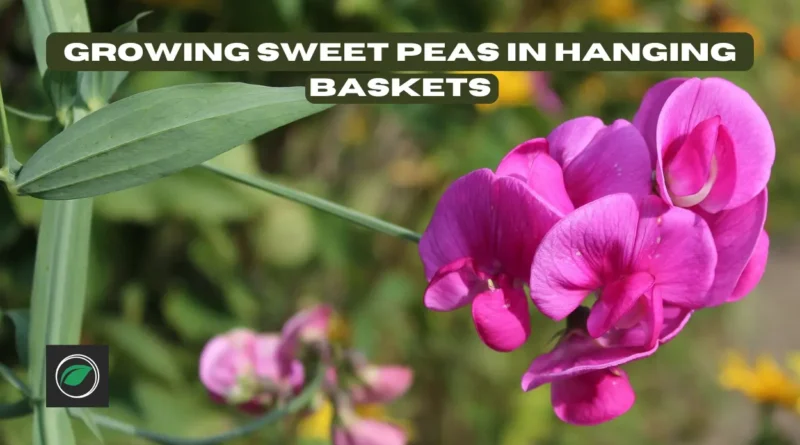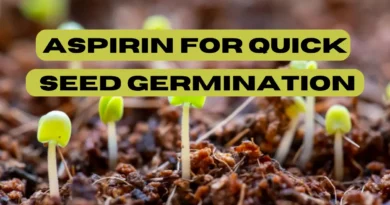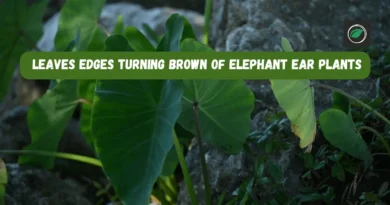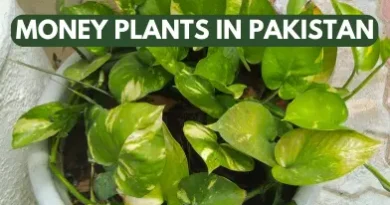Guide to Growing Sweet Peas in Hanging Baskets-2024
Sweet peas are arguably one of the prettiest and most fragrant flowers you can grow, and nothing displays their charm quite as elegantly as a hanging basket. As we delve into the world of vertical sweet pea gardening, we’re met with a canvas of lovely color and scent, suspended invitingly at head height.
This comprehensive guide will walk you through every step of growing sweet peas in hanging baskets, from choosing the right varieties to relishing a sweet pea-filled vista right outside your window.
Table of Contents
Overview of Growing Sweet Peas in Hanging Baskets
Sweet peas gracing your garden with their sweet fragrance and delicate blooms is a delightful dream. But when space is at a premium, or the weedy ground poses a challenge, opting for hanging baskets can be a game-changer.
The technique of growing sweet peas in hanging baskets has ancient beginnings, reflecting the ingenuity of gardeners seeking to maximize limited growing space. Not only do hanging baskets provide an innovative solution for tight spaces, but they also present sweet peas at eye level where you can fully appreciate their beauty and aroma.
Benefits of Growing Sweet Peas in Hanging Baskets
The benefits of this vertical gardening approach are numerous:
- Visual Appeal:
Sweet peas in hanging baskets are eye-catching and by growing them, you’re creating a living addition to the overall decor of your property.
- Space Saving:
Hanging baskets allow you to grow plants in places where there’s little or no ground space.
- Scent Everywhere:
At nose height, hanging baskets release their fragrance for all to enjoy.
- Easy Maintenance:
Hanging baskets are easily movable, which can be a blessing during changes in weather.
Choosing the Right Varieties for Sweet Peas in Hanging Baskets
The first step is always choosing the ideal sweet pea varieties for this unique gardening method. Some sweet peas grow better in hanging baskets than others. Look for varieties that are naturally compact or are bred specifically for hanging basket use.
Compact and Trailing Varieties Ideal for Hanging Baskets
Opt for varieties of sweet peas that are shorter, bushier, and bear more flowers on shorter stems. Some well-loved compact varieties include ‘Bijou Mix,’ ‘Royal Family,’ and ‘Matucana.’
For a cascading effect, trailing varieties like ‘Cupid Pink‘ or ‘High Scent‘ work beautifully.
When selecting varieties, key factors to consider are:
- Mature Height:
Look for plants that grow no more than 10 to 12 inches tall to avoid overcrowding.
- Flowers per Stem:
Varieties that yield multiple flowers on a stem will provide a lush display.
- Fragrance:
This is, after all, one of the great things about sweet peas. Go for the ones with scents that you find appealing.
Selecting Hanging Basket For Sweet Peas
Your next step is choosing the correct hanging basket for sweet peas. The basket’s material, size, and drainage capabilities are critical to fostering a healthy growing environment.
Factors to Consider When Choosing a Hanging Basket for Sweet Peas
Consider the following factors:
- Size:
The ideal size for growing sweet peas is a hanging basket with a diameter of at least 12 inches. This size allows for enough room for the roots to spread and prevents the soil from drying out too quickly.
- Material:
Hanging baskets come in various materials, such as plastic, wire, or woven wicker. Consider utilizing a water-retaining variety to reduce watering frequency.
- Drainage:
Ensure that your basket has sufficient drainage holes to prevent waterlogging, which can lead to root rot.
Preparing the Hanging Basket
Once you’ve selected the right basket, preparing it properly is crucial for strong and healthy plants.
Steps to Prepare the Hanging Basket Before Planting Sweet Peas
Here’s your to-do list:
- Cleaning:
Before using the basket again, make sure to thoroughly clean it to remove any residual soil.
- Lining:
To prevent the soil from washing out when watering, it’s advisable to line the basket. Options for lining include using a basket liner, burlap, or even a layer of newspaper.
- Soil:
Use a high-quality potting mix rich in organic matter that retains moisture but still drains well.
Sowing Sweet Pea Seeds in Seed Trays or Pots
Although sweet peas can be sown directly into hanging baskets, the process is often more successful when the seeds are started in seed trays or pots.
Starting Sweet Pea Seeds Indoors in Seed Trays or Pots
Sweet peas do best when germinated in a controlled environment. Start by filling your seed trays or pots with compost and water thoroughly before sowing.
Proper Seed Sowing Techniques and Tips for Successful Germination
Here’s a step-by-step guide for sowing sweet pea seeds:
- Soak Seeds:
Some gardeners swear by soaking their sweet pea seeds overnight to encourage germination.
- Sowing Depth:
Sow your seeds about 1 inch deep in individual seed trays or pots.
- Warm and Bright:
Place the pots or trays in a warm, bright spot, but not in direct sunlight.
- Moisture:
Make sure the soil stays consistently moist, but not soaked.
- Transplanting:
Once your seedlings have at least two sets of leaves and the threat of frost has passed, transplant them into your prepared hanging baskets. Harden off your plants for a week before moving the baskets permanently outside.
Establishing a Maintenance Routine
Regular maintenance when growing sweet peas in hanging baskets is necessary for the success of your sweet peas. Here’s a brief maintenance routine to follow:
- Watering:
Sweet peas are thirsty plants, especially when grown in baskets where the soil can dry out quickly. Water them deeply every few days, more frequently during hot and dry spells.
- Feeding:
Sweet peas are heavy feeders. Start with a balanced, water-soluble fertilizer, then switch to a high-potash feed during flowering.
- Support:
Use pea sticks, a trellis, or a strategically placed obelisk to help train your sweet peas to grow upwards and to prevent them from becoming wind-blown or broken.
- Deadheading:
To promote a continuous bloom, it is advisable to regularly eliminate faded flowers.
- Pest and Disease Control:
Keep an eye out for pests and common diseases such as powdery mildew. Proper air circulation can aid in the prevention of such issues.
Following these maintenance steps, your sweet peas will reward you with months of colorful flowers and their signature fragrance.
Conclusion
Growing sweet peas in hanging baskets is not only a fantastic space-saving technique, but it’s also a way to enjoy these charming blooms up close and personal. With some careful planning, choosing the right varieties, and keeping up with regular maintenance, your hanging sweet pea garden could make your neighbors jealous!
Let the beauty, color, and fragrance of sweet peas in hanging baskets fill your outdoor living space. Whether you’re enhancing your porch, or patio, or creating a tranquil corner of your garden, the rewards of this venture are plentiful. And as you continue to nurture your climbing companions, they’ll weave their way into your heart, one colorful tendril at a time.
Frequently Asked Questions (FAQs)
Q: How often should I water sweet peas in a hanging basket?
A: In general, sweet peas are thirsty plants and require frequent watering. The soil should always be kept moist, but not overly saturated. During hot and dry spells, you might need to water them daily.
Q: How much sunlight do sweet peas in a hanging basket need?
A: Sweet peas prefer a sunny location but appreciate some partial shade during the hottest part of the day.
Q: Can sweet peas survive frost?
A: Sweet peas are not frost-tolerant. It’s best to start your seeds indoors and transplant them into your hanging baskets once the threat of frost has passed.
Q: What should I feed my sweet peas?
A: Sweet peas are heavy feeders. Begin with a balanced, water-soluble fertilizer, then switch to a high-potash feed during flowering. Organic options such as compost or fish emulsion can also be beneficial.
Q: Do sweet peas need support?
A: Yes, sweet peas are climbing plants and will require some form of support to grow upwards. Pea sticks, trellises, and obelisks are popular options.




